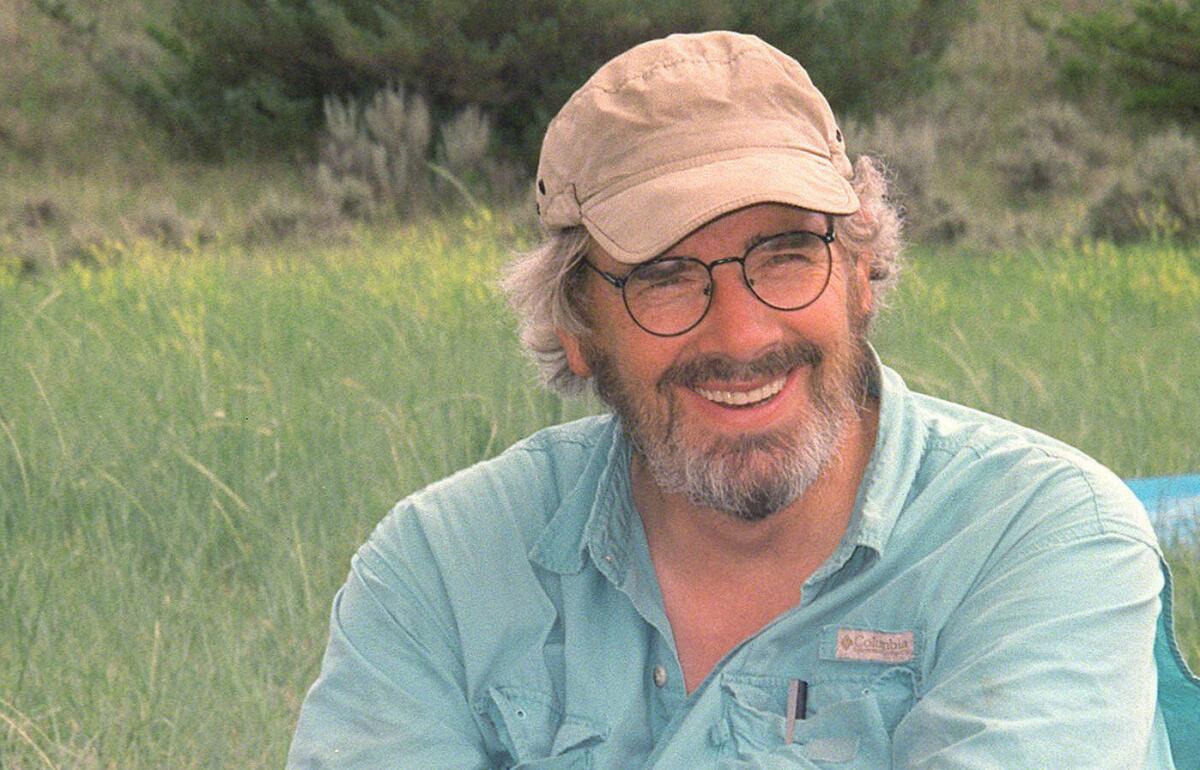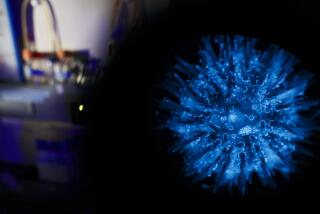‘Jurassic World’ paleontologist wants to turn a chicken into a dinosaur

Jack Horner says he’s shaped his life around two childhood dreams: to be a paleontologist and to have a pet dinosaur.
His first dream has already come true. He found his first dinosaur bone at age 8, near his home in Montana. In the six decades since, he has unearthed remains from tens of thousands of dinosaurs — including never-seen-before fossils of embryonic dinosaurs still inside eggs. These finds led to his groundbreaking discoveries that some dinosaurs built nests, lived in colonies and cared for their young. In addition to his day job as a professor of paleontology at Montana State University, Horner has served as a consultant to the “Jurassic Park” movies about how to portray dinosaurs.
Now Horner is ready to realize his second dream — the pet dinosaur.
His plan is to manipulate the DNA of a chicken so that it will express some of its latent dinosaur-like traits. Since birds are the evolutionary descendants of dinosaurs, Horner believes they have dormant DNA that, if activated, could potentially cause them to develop some of the traits dinosaurs had, such as teeth, three-fingered hands and tails. And voila: a chicken-o-saurus.
Horner appeared at the Natural History Museum of Los Angeles County this week and had this to say about dinosaurs, genetic engineering and what Hollywood gets wrong:
How realistic are the dinosaurs in the “Jurassic Park” movies?
Dinosaurs are not that scary. They’re not going to tear holes in your vehicles or rip holes in your buildings. All evidence points to them being much more bird-like than we portray them.
So they didn’t roar?
I don’t think they roared at all. Roaring is a characteristic of mammals. Even alligators and crocodiles don’t roar. They grunt a little bit, but they don’t roar like mammals do.
How did you get interested in dinosaurs in the first place?
I was born this way. I do not remember any time in my entire life when I wasn’t interested in finding fossils. I’d find them, and I’d bring them home and catalog them carefully. I was a nerdy little scientist at the earliest ages.
What do you like about fossils?
I like touching them, feeling them and studying them. As a kid I would go to the library and look at all of the books that had pictures of fossils in them. I’d do the best I could to identify them. I still do that.
What can you learn about dinosaurs from their bones?
We cut into the bone and look inside at the structure. You can see how the bone forms, and you can look at its growth over time. It gives us a lot of information about the physiology of the animal -- the growth rate, how long it lived, how old it was when it died. We even think that it tells us about the size of its genome. There’s just all sorts of information inside the bone.
How did you come up with the idea to create a dino-chicken?
For me, creating a dinosaur is the biggest project we have. I know we can do it. It’s like the moon project. We know we can do it — it just takes time and money. And we will get it done. We will make a dino-chicken-like animal pretty soon. We’re moving along pretty quickly.
Why do you want to do that?
For lots of reasons. First off, there are so many arguments about evolution, and this is proof of concept. The chicken-o-saurus would provide proof of ancestral evolution [of birds from dinosaurs]. We’re going to make a dino-chicken without adding anything to the chicken.
But it’s also about making new kinds of animals.
New kinds of animals? How?
We do genetic engineering all the time through breeding. You start with a wolf and you end up with a Chihuahua. That’s genetic engineering. People just don’t realize it.
What we’re doing now is figuring out a way to do it quicker, so we don’t have to wait hundreds or thousands of years to get a Chihuahua. We’ll just be able to do it in one shot. And we can mix and match different characteristics.
As absurd and wild as it sounds, I honestly believe that even before we make a dino-chicken, we could make a unicorn.
Really?
Yeah!
And would you want to?
Well, why not? Wouldn’t it be fun to have a unicorn? I mean, just think of the possibilities of making mythical creatures -- mixing and matching different characteristics. I mean, it just sounds fun to me! If a Chihuahua is fun, then a unicorn has to be fun.
Are there ethical issues that need to be considered before making something like a dino-chicken?
We’d need more chicken feed.
How have other scientists responded to the idea of creating dinosaurs or mythical creatures?
Most scientists who have spoken up about it are excited. I have a number of them working with me on the project. I know there are some people out there who pooh-pooh it as poor science. But who gets to evaluate what’s good science or bad science?
I don’t think there should be limits on science. Someone asked me recently, “Where do you draw the line?” What line? And why should we draw one? Should somebody have drawn the line before they made the Chihuahua? I don’t know.
Could we use genetic engineering to bring back other extinct species, like Neanderthals?
I don’t care whether we bring back more people. I want a dinosaur.
This interview was edited for length and clarity.
For more science news, follow me on Twitter @sasha_hl and “like” Los Angeles Times Science & Health on Facebook.






